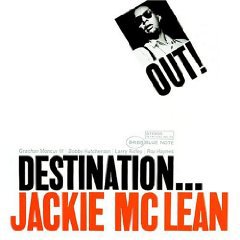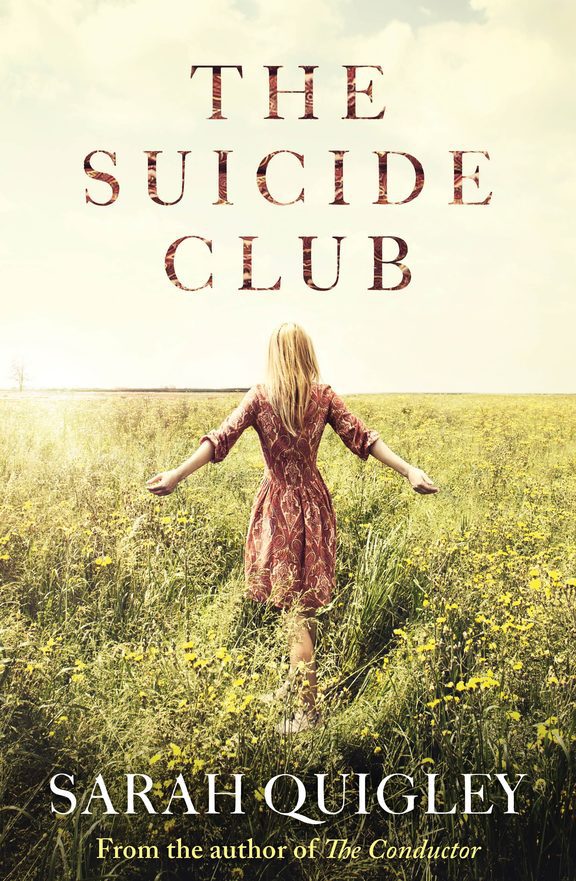Reid Miles’ cover designs for Blue Note were very often innovative and many are now regarded as iconic, but few are as striking and timeless as his artwork for Larry Young’s Unity, the organist’s second release for the label. Stacked bold black capitals in sans-serif type on a plain white background. Blood-orange circles bouncing inside the ‘U’ like reactive particles contained within a test-tube representing the corralled focus of the four musicians who appear on the album. It is almost as simple an arrangement as one could imagine, but the less is more approach here is genius. The Bauhaus inspired cover-art for Jackie McLean’s 1963 LP Destination Out! (designed by Larry Miller) shares a similar minimalist aesthetic and the music on both albums is likewise innovative and forward-looking. 
Larry Young’s first Blue Note LP, Into Somethin’ (1964) was a muted collection featuring guitarist Grant Green’s typically warm playing, occasional fiery saxophone by Sam Rivers and an uncharacteristically subdued Elvin Jones on drums. Tasteful but reserved, there was nothing that hinted of the direction his next recording would take. Drifting from his previous Jimmy Smith-influenced style, as heard on the very fine Young Blues from 1960, he edged toward a more exploratory form. Noted jazz critic Nat Hentoff provides clearly stated liner-notes for Unity. His remarks about Larry Young’s maturing technique are reinforced with a quote from the saxophonist on this date, Joe Henderson:
‘Unlike too many of his contemporaries on the instrument, he doesn’t swallow up his colleagues in a torrent of notes and volume. Or, as Joe Henderson puts it, “With some organists, it’s hard to compete against all that juice. But Larry listens to you and complements you.”’
His willingness to let his brilliant sidemen occupy much of the spotlight is key to the success of Unity. Joined again by Jones in a far more explosive frame of mind, Young recruited Joe Henderson and the immensely gifted trumpeter Woody Shaw, only twenty years old at the time, who wrote three of the album’s six tracks. Both Henderson and Shaw had spent time in Horace Silver’s line-up, appearing on his classic The Cape Verdean Blues recorded just one month prior to this session. They are further liberated here by Elvin Jones’ expansive polyrhythmic performance, admittedly a notch beneath his recent contributions to John Coltrane’s A Love Supreme and Ascension in terms of intensity. He was, however, soon to sever ties with Coltrane, whose increasingly avant-garde approach, essentially a gale-force dissonance employing the use of two competing drummers, was too much of a departure for Jones. “At times I couldn’t hear what I was doing,” he explained. “Matter of fact, I couldn’t hear what anybody was doing. All I could hear was a lot of noise.” He relished a return to more relatively straight ahead time-keeping. His one-on-one face-off with Young on the Thelonious Monk tune ‘Monk’s Dream’, more of a celebration than a performance, is alive with invention equal to the cross-eyed eccentricities of the composition. Each of Young’s solos throughout Unity, during which the horns lay out, are effectively duets with Jones and their interplay is frequently astonishing. The spiky topography of Henderson’s ‘If’ showcases Young’s controlled scatter-gun playing, evident also on Woody Shaw’s ‘Zoltan’ which opens the album with single-minded intent. All soloists play above themselves on the nouveau-bop juggernaut ‘Beyond All Limits’, another excellent Shaw composition. Larry Young traverses the break-neck changes with abandon, encouraged by yet more bristling accompaniment by Jones. Woody Shaw’s powerful trumpet on ‘Softly, As In A Morning Sunrise’ exhilarates, and his standout tune ‘Moontrane’ is perhaps the highlight of the set, a masterpiece of harmonic streamlining that elevates each player into a shared strata of invigoration and euphoria. With each musician achieving an equal voice, Unity is a rare convergence of energies that shaped a singular entity. After more than half a century since its creation, this standalone post-bop artefact still shines like a new flame.
Advertisements Share this:




